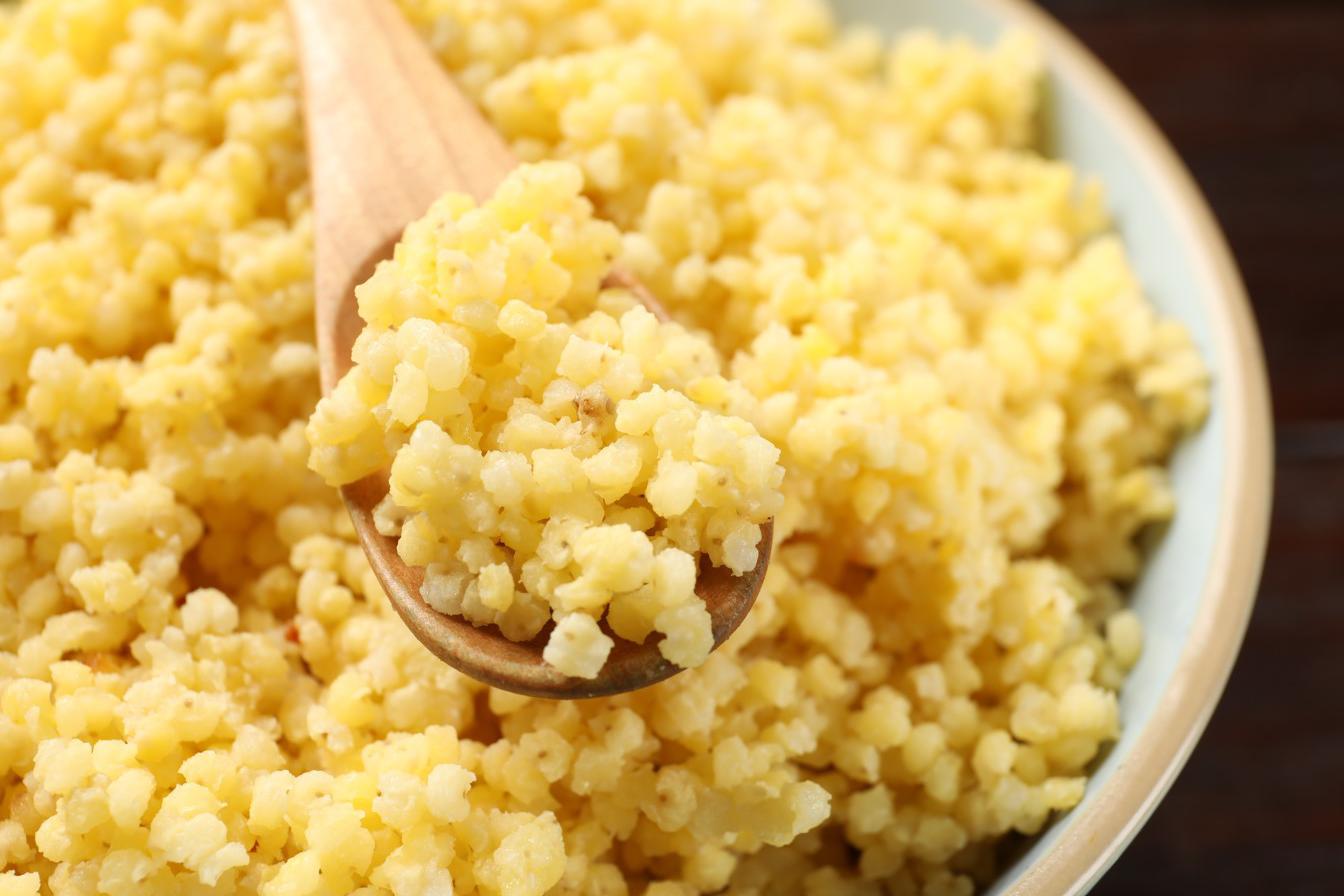
- What you need to know
- Calories and nutritional value
- Benefit
- Harm
- Expert commentary
Ksenia Selezneva, nutritionist, candidate of medical sciences, head of the department of dietetics at the European Medical Center (EMC);
Yulia Mironova, therapist at BestDoctor.
What you need to know about millet porridge
Millet porridge is a universal dish: it can be eaten for breakfast, lunch or dinner, sweet or salty
Millet porridge is a dish made from polished grain (millet) of a herbaceous plant of the millet genus. It belongs to the cereal family and is cultivated in India, Nigeria and other countries in Asia and Africa. It is also used as feed for livestock and poultry (1). From the point of view of cultivation, millet is less capricious to weather conditions and external circumstances than other cereals. For example, it is resistant to drought, infertile soil, and insect pests (2). Millet is divided into two categories – large and small, and each of them has several varieties. Large ones are usually more popular for cultivation and consumption. However, all types have high nutritional value and health benefits.
Millet porridge is a universal dish: it can be eaten for breakfast, lunch or dinner, sweet or salty. It can be either an independent dish or a side dish for meat or poultry. You can add pumpkin, nuts, dried fruits, butter to the porridge, and cook it in milk or water.
Calorie content of millet porridge and nutritional value
One cup (100 g) of cooked millet contains 119 kcal. Also included (3):
- water — 71.4 ml;
- protein – 3.51 g;
- fats – 1 g;
- carbohydrates – 23.7 g;
- fiber – 1.3 g;
- sugar – 0.13 g.
The benefits of millet porridge: four properties

Millet porridge is gluten-free, making it suitable for people with celiac disease or on a gluten-free diet
Millet porridge is high in nutrients and plant compounds that may provide health benefits, such as lowering cholesterol and blood sugar.
1. Contains many vitamins and antioxidants
Millet is rich in phenolic compounds, especially catechins and ferulic acid. They function as antioxidants, protecting cells from oxidative stress (4). Ferulic acid has anti-inflammatory properties, affects the rate of wound healing and protects the skin from ultraviolet radiation (5), (6). And catechins interact with heavy metals in the bloodstream, preventing poisoning by these substances (7), (8).
Millet contains more essential amino acids than other grains. They are involved in protein construction and other important processes in the body. There is also more calcium in millet than in other cereals: 100 g of millet porridge can provide 13% of the daily requirement of this element. He essential for healthy bones, blood vessels, muscles and proper functioning of the nervous system (9).
2. Helps control blood sugar levels
Millet porridge contains a lot of fiber and non-starchy polysaccharides. These are two types of indigestible carbohydrates that lower blood sugar levels (4), (10). Millet also has a low glycemic index, which means that, most likely, if you eat a serving of millet porridge without sugar, your blood sugar level will not increase (11), (12). That is why people diagnosed with diabetes can add this product to their diet.
One study included 105 people with type 2 diabetes replaced the rice they ate for breakfast with millet. As a result, their blood sugar levels began to decrease. Another experiment involving 64 people with prediabetes showed similar results (13).
3. Reduces cholesterol levels
Millet contains soluble fiber. Thanks to it, a viscous substance is formed in the intestines, which retains fats and reduces cholesterol levels in the blood (4).
The protein contained in cereals helps reduce cholesterol levels. This was proven by a study conducted on mice with type 2 diabetes. The subjects were kept on a high-fat diet supplemented with millet protein concentrate. Triglycerides decreased and good cholesterol levels increased compared to the control group (14), (15). The blood levels of adiponectin, a hormone that has an anti-inflammatory effect, supports heart health and stimulates the oxidation of fatty acids, also increased (16), (17).
4. Gluten Free
Millet porridge is gluten-free, making it suitable for people with celiac disease or on a gluten-free diet (4), (18). Gluten is a protein found in grains such as wheat, barley and rye. In people with celiac disease, it causes gastrointestinal problems: diarrhea, malabsorption of nutrients. But those who monitor this element in their diet should in any case check the composition of the product.

Harm of millet porridge

Millet is a good source of protein and carbohydrates and also contains fiber.
Millet contains antinutrients. They can block or slow down the absorption of nutrients. This can lead to their deficiency (22). For example, phytic acid interferes with the absorption of potassium, calcium, iron, zinc and magnesium. But if the diet is varied, then the likelihood of experiencing this deficiency due to millet porridge is quite low.
Expert commentary

